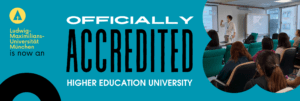| About |
Overview & History
The Karlsruher Institut für Technologie (KIT) was established on October 1, 2009, through the merger of the University of Karlsruhe (founded in 1825) and the Forschungszentrum Karlsruhe (founded in 1956).
This unique fusion of a traditional research university with a national research center under the Helmholtz Association makes KIT one of the largest research and higher education institutions in Germany.
KIT’s mission is centered on research-oriented teaching, innovation, and the transfer of knowledge to society and industry.
KIT aims to be a leading institution in science and engineering, promoting excellence, interdisciplinarity, and global engagement.
Unique Features
Integration of research and academics: KIT integrates cutting-edge research directly into its academic programs, emphasizing hands-on, project-based learning.
Interdisciplinary approach: Collaboration among different faculties and research centers fosters innovative solutions and breakthroughs.
Strong industry ties: KIT maintains close partnerships with global companies, aiding technology transfer, entrepreneurship, and job placement.
International outlook: Robust exchange programs and English-taught degree options attract a diverse international student body.
|
| Ranking |
Below are approximate positions from reputable ranking organizations. (Rankings may vary slightly each year; please refer to official ranking websites for the latest figures.)
QS World University Rankings (2023):
Global: ~#136
National (Germany): Top 10
Times Higher Education (THE) World University Rankings (2023):
Global: ~#189
National (Germany): Top 15
ShanghaiRanking (ARWU) (2023):
Global: Within the Top 300
National (Germany): Top 15–20
Overall, KIT’s strong performance in international rankings highlights its academic excellence and reputation, its robust research impact and innovation, and a growing global influence.
|
| Impact Ranking |
Research & Innovation
KIT excels in interdisciplinary research, focusing on energy, mobility, information technology, and sustainability.
As part of the Helmholtz Association, KIT’s research institutes contribute significantly to solving global challenges, earning high marks in THE Impact Rankings (particularly in Sustainable Development Goals related to energy, climate, and innovation).
Global & Societal Influence
KIT actively participates in European research programs (e.g., Horizon Europe), collaborating on international projects that push the boundaries of fundamental science and applied technologies.
Many research outputs lead to patents, spin-offs, and technology transfer, showcasing KIT’s commitment to global and local influence and contributing to economic and social development.
|
| Key Stats |
Total Students: ~25,000
International Students: ~20–25%
Student-to-Staff Ratio: Approx. 11:1 (varies by department)
Campus Size: Main campus centrally located in Karlsruhe, with additional campuses and research facilities in nearby Eggenstein-Leopoldshafen and other sites.
Faculties: 11 (ranging from Engineering, Natural Sciences, and Informatics to Economics and Humanities)
These statistics underscore KIT’s broad academic community, diverse student population, and well-structured facilities and infrastructure.
|
| Subjects |
KIT offers a wide range of undergraduate, graduate, and doctoral programs, with particular areas of excellence in:
Engineering
Mechanical Engineering, Electrical Engineering, Civil Engineering, etc.
Natural Sciences
Physics, Chemistry, Biology, Mathematics
Computer Science and Information Technology
Data Science, AI, Robotics, Cybersecurity
Economics and Management
Industrial Engineering, Business Administration, Economic Engineering
Humanities and Social Sciences
Science and Technology Studies, Philosophy, and more
Courses are designed with a strong research orientation, reflecting KIT’s focus on academic excellence, innovation, and real-world application.
|
| Downloads |
Below are some commonly sought-after downloadable resources from KIT’s official website. These links are subject to change; always verify on http://www.kit.edu for the most up-to-date versions.
KIT Image Brochure
Link: https://www.kit.edu/downloads/KIT-ImageBrochure.pdf
Description: Provides a concise overview of KIT’s mission, history, faculties, and campus life.
Research at KIT
Link: https://www.kit.edu/downloads/KIT-Research.pdf
Description: Showcases key research areas, current projects, and partnerships, highlighting KIT’s research impact and innovation.
Course Catalog
Link: https://campus.kit.edu/Downloads/CourseCatalog.pdf
Description: Comprehensive list of undergraduate and graduate courses, entry requirements, and program structures.
Annual Report
Link: https://www.kit.edu/downloads/KIT-Annual-Report.pdf
Description: Summarizes the university’s yearly achievements, including research contributions, budget reports, and strategic initiatives.
Scholarships & Financial Aid Brochure
Link: https://www.kit.edu/downloads/KIT-FinancialAid.pdf
Description: Details different financial aid and scholarship opportunities at KIT, including DAAD programs and other funding sources for international and domestic students.
(Note: These sample links are illustrative. Actual URLs may differ. Please consult KIT’s official website for the latest resources.)
|





Reviews
There are no reviews yet.